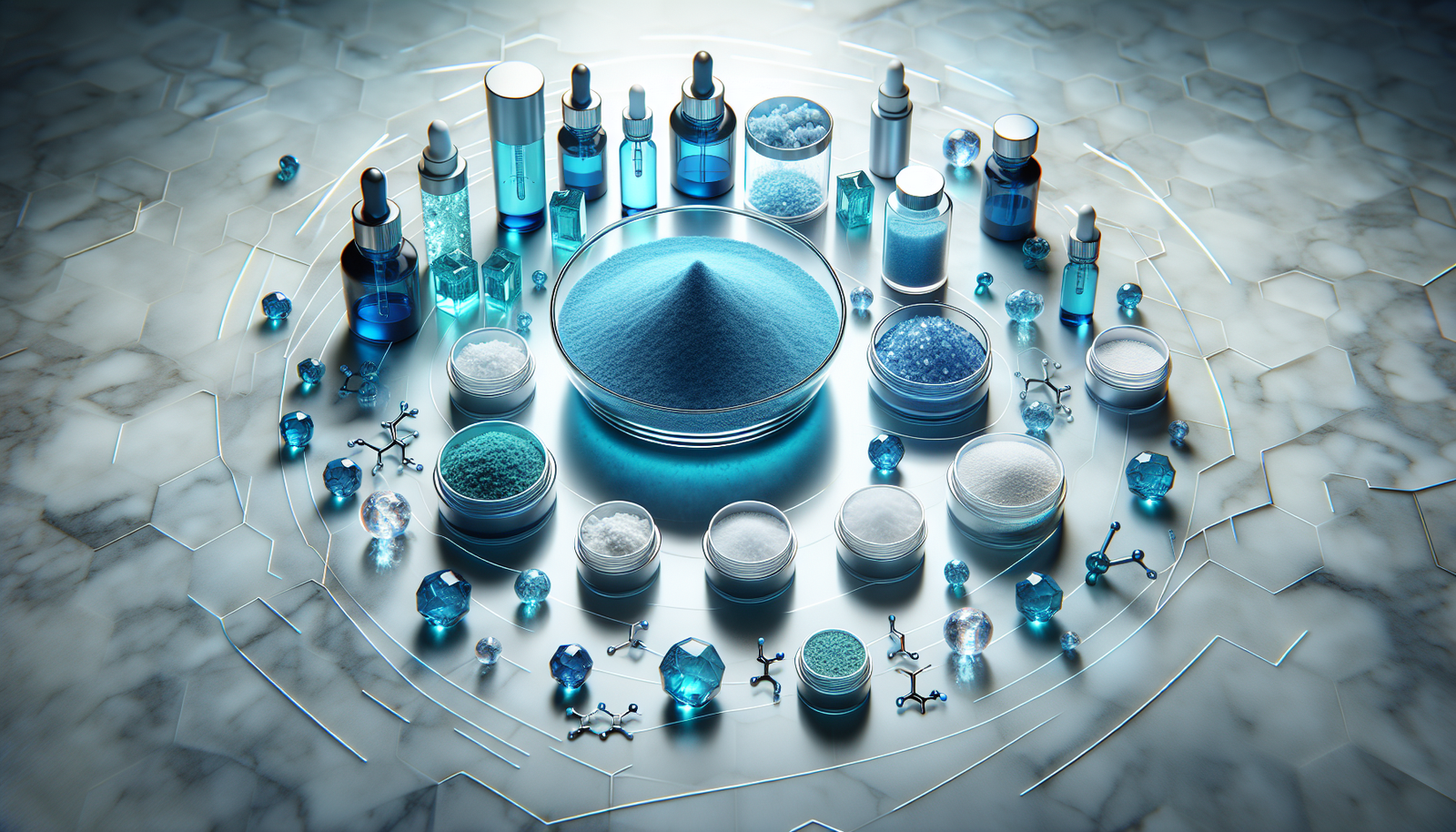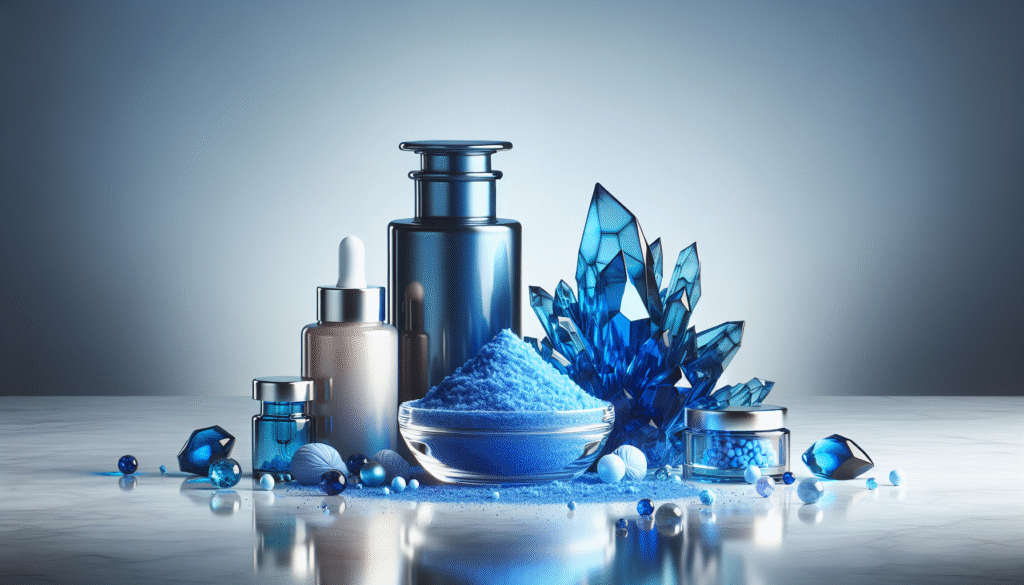
Have you ever wondered how various compounds stack up against each other in the realm of anti-aging? This comparison not only considers the common options available today but focuses specifically on Methylene Blue, a compound that has recently garnered attention for its potential in combating the signs of aging.

Understanding Methylene Blue
Methylene Blue, a synthetic dye discovered in the late 19th century, is primarily known for its use in medicinal and scientific applications. Recently, it has emerged as a potential anti-aging agent due to its unique properties.
The Mechanism of Action
Methylene Blue operates primarily through its role in the cellular respiration process. It has been shown to enhance mitochondrial function and improve energy production within cells. This property is particularly crucial because as you age, mitochondrial function tends to decline, leading to decreased energy levels and increased signs of aging.
Antioxidant Properties
An often overlooked but essential aspect of aging is oxidative stress, which can lead to cellular damage. Methylene Blue has been identified as a potent antioxidant, potentially neutralizing free radicals that cause oxidative damage. This ability may aid in reducing the visible signs of aging and promote skin health.
Common Anti-Aging Compounds
In addition to Methylene Blue, several other compounds are frequently touted for their anti-aging properties. Understanding these alternatives can help you make informed decisions about anti-aging treatments.
Retinoids
Retinoids, derived from vitamin A, are renowned for their ability to stimulate cell turnover and collagen production. They can be highly effective in reducing fine lines and improving overall skin texture. However, the use of retinoids can lead to irritation, especially in sensitive skin types.
Peptides
Peptides are short chains of amino acids that play a pivotal role in building proteins in the skin, including collagen and elastin. Various peptide formulations can encourage skin renewal and hydration, offering a gentle, effective alternative to more aggressive treatments.
Hyaluronic Acid
Hyaluronic Acid is a naturally occurring substance in the body known for its unparalleled ability to retain moisture. As you age, your skin may lose hydration, leading to a more aged appearance. Incorporating hyaluronic acid can plump the skin and reduce the visibility of fine lines and wrinkles.
Comparing Methylene Blue to Other Anti-Aging Compounds
Now that you understand Methylene Blue and common anti-aging compounds, it’s essential to compare their effectiveness, safety, and overall profile.
Effectiveness
When evaluating the effectiveness of Methylene Blue against other compounds, consider the following criteria:
-
Skin Renewal: Retinoids are often the gold standard for skin renewal, but Methylene Blue shows promise in enhancing cellular energy and renewal through its mitochondrial support.
-
Moisture Retention: Hyaluronic Acid excels in retaining moisture but does not directly influence cellular processes like Methylene Blue.
-
Collagen Production: Both retinoids and peptides promote collagen production, though Methylene Blue’s mechanism may also contribute to this process indirectly.
Safety Profile
Safety is a crucial aspect of any treatment. Here’s how Methylene Blue and its counterparts fare:
| Compound | Common Side Effects | Safety Remarks |
|---|---|---|
| Methylene Blue | Mild irritation at injection sites | Generally safe in low doses; primarily used in clinical settings. |
| Retinoids | Redness, peeling, sensitivity | Requires gradual introduction; not recommended for pregnant individuals. |
| Peptides | Rare allergic reactions | Typically well-tolerated; safer for sensitive skin. |
| Hyaluronic Acid | Rare swelling or redness | Very well tolerated, with minimal side effects. |
While Methylene Blue may not be widely used topically, when applied in appropriate doses, it appears to have a good safety profile compared to other agents.
Unique Benefits of Methylene Blue
Each anti-aging compound holds unique features that may appeal to you. Here are some specific benefits of Methylene Blue that differentiate it from the alternatives.
Cognitive Enhancements
Methylene Blue has shown potential in enhancing cognitive functions, specificallymemory and focus, due to its effects on mitochondrial function. This enhancement can also indirectly support skin health; as your body ages, cognitive decline often accompanies physical aging.
Broad Spectrum of Use
Methylene Blue may serve varied functions beyond skincare. It has historical uses in treating conditions like malaria and as a dye in biology. This versatility can make it an intriguing addition to an anti-aging regimen.

The Role of Mitochondrial Dysfunction in Aging
Understanding the role of mitochondria is crucial for grasping the significance of Methylene Blue’s function in anti-aging. Mitochondria, often dubbed the powerhouse of cells, are responsible for energy production.
Why Mitochondrial Health Matters
As you age, mitochondrial function declines, leading to reduced energy production and increased reactive oxygen species (ROS), which contribute to aging. Supporting mitochondrial health through compounds like Methylene Blue may help combat these aspects of aging.
Clinical Evidence
Recent research indicates that Methylene Blue can stimulate mitochondrial biogenesis, enhancing cell metabolism and energy. While further studies are needed, early findings suggest a direct correlation between improved mitochondrial function and reduced signs of aging.
How to Incorporate Methylene Blue into Your Routine
If you are intrigued by the potential benefits of Methylene Blue, it is essential to consider safe and practical incorporation into your skincare routine.
Consult a Healthcare Professional
Before introducing Methylene Blue into your regimen, consult with a healthcare provider or dermatologist. They can guide you on appropriate dosages and application methods, ensuring that this compound aligns with your skin concerns and health objectives.
Choosing Quality Products
When selecting Methylene Blue products, prioritize formulations from reputable brands that ensure quality and safety. Look for products that specify concentration levels and purity.
Application Tips
When using Methylene Blue, start with lower concentrations to assess your skin’s tolerance. You may consider combining it with other compounds, like peptides or hyaluronic acid, to enhance your skincare routine further.
Potential Drawbacks of Methylene Blue
While Methylene Blue holds promise, you should be aware of potential drawbacks associated with its use.
Staining
Due to its vibrant blue color, Methylene Blue may stain skin and clothing. Therefore, exercise caution during application and consider using it at night or in a controlled environment.
Limited Research
Though promising, the body of research surrounding Methylene Blue’s use in skincare is still emerging. More extensive and rigorous studies are necessary to firmly establish its safety and efficacy profile and understand long-term impacts.
Conclusion: Is Methylene Blue Worth It?
In the landscape of anti-aging compounds, Methylene Blue presents intriguing potential against established ingredients like retinoids, peptides, and hyaluronic acid. By supporting mitochondrial function and exhibiting antioxidant properties, it stands out.
Considering its benefits and limitations, Methylene Blue could be a valuable addition to your anti-aging arsenal – particularly if you seek alternatives beyond conventional treatments. However, you must prioritize safety and consult professionals to ensure it aligns with your unique skin needs.
Ultimately, an anti-aging strategy should embrace diversity: mixing various compounds to achieve optimal results. Incorporating Methylene Blue may help you tackle the multifaceted aspects of aging in a holistic manner, ultimately leading to healthier, more vibrant skin.